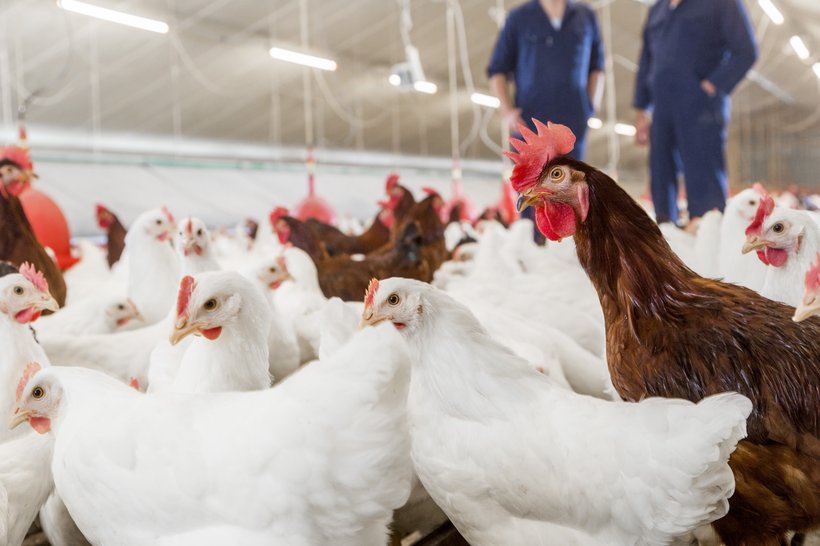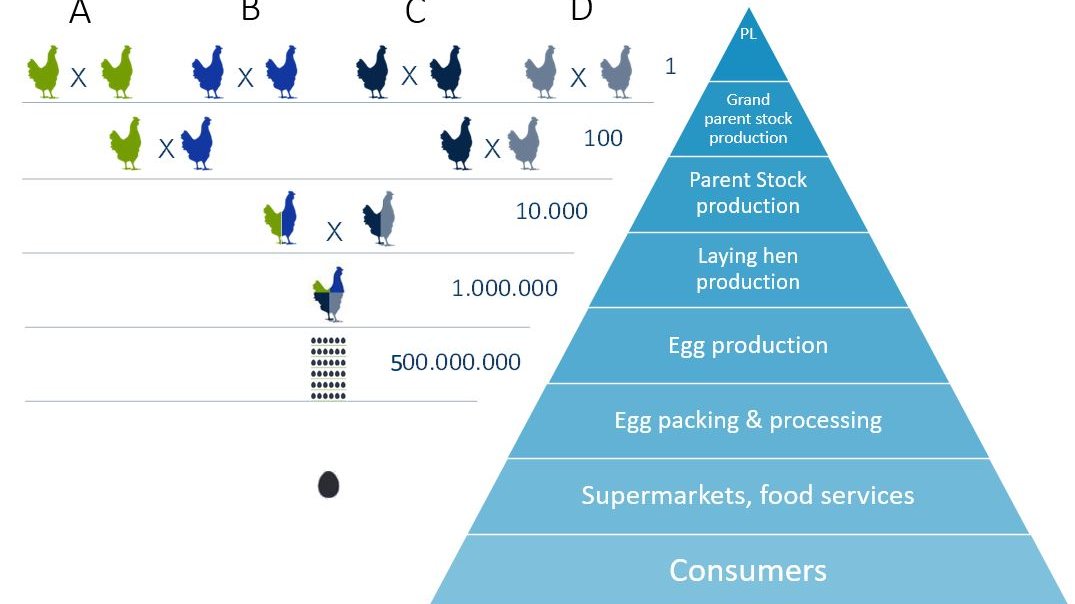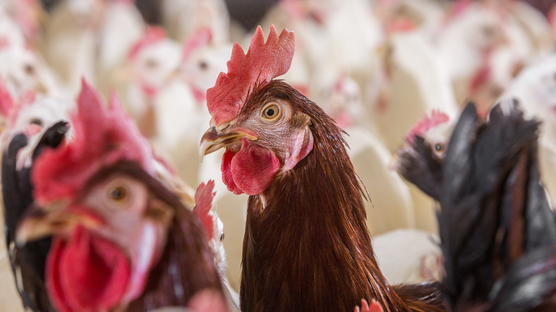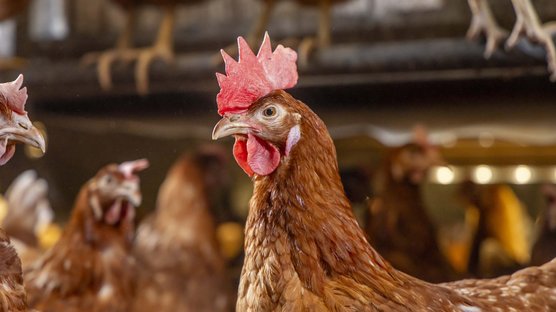
Published on Dec. 15, 2022
The Chicken Genetic Family Tree
When buying eggs, most people know that these eggs have been produced by a chicken, but they have little idea of the ancestors of that chicken. Every chicken has a set of parents, which have their own parents (grandparents), and so on up the line. Let us explain how the genetic family tree of laying hen works.
Most laying hens that kept commercially around the globe come from two large international poultry breeding companies, and 1 local breeding company (in the case of China). Many of the chicken breeds (commercial hybrids) that are sold by the poultry breeding companies are present all over the globe. In recent decades, intensive consolidation of the poultry breeding sector took place, resulting in these 2 main international players that remain today. As the result of the consolidation, the size of their breeding operations increased. This increase in size allowed for bigger numbers of genetic pure lines to be maintained, and therefore available to select from. As crossbreeding is intensively used since the middle of the 20th century, the consolidation also allowed for improved optimization of crossbreeding as multiple gene pools came together.
What is crossbreeding?
When we look to the definition of crossbreeding, we can see that crossbreeding is the act or process of producing offspring by mating purebred individuals of different breeds or varieties. Crossbreeding is defined as the process or the act of producing offspring particularly through mating two purebred individuals but come from different genetic lines. When it is usually done with the intent of producing offspring that would acquire desired traits of the parent lineages the process is specifically referred to as designer crossbreeding. This is commonly practiced by poultry breeders, especially when the desired traits would be beneficial to the offspring, such as when its biological fitness is enhanced.
Because of the size of our breeding operations, and therefore the numbers of chickens and pure lines that we can maintain, we can have selective breeding programs in place for each pure line, which allows us to make significant improvements to the genetic potential of our chicken breeds with every new generation. We call our genetic flocks that we maintain at our nucleus farms, “pure lines”, the genetic progress that we make is achieved by using conventional selective breeding techniques.
The different generations
The pure lines are used to create the next generation of pure lines, i.e. renewing and improving the pure line with each new generation via selective mating. But these pure lines are also used to create the so called “Grandparent generation”, the GP’s. At the GP level, there are 4 different lines of birds, 2 male and 2 female lines. To make it easier to understand and to avoid any confusion, these 4 lines are identified as: A-B-C-D.
- The A line is the male of the male line
- The B line is the female of the male line
- The C line is the male of the female line
- The D line is the female of the female line
The GP A x B cross will produce the AB —The Parent Stock (PS) male.
The GP C x D cross will produce the CD —The Parent Stock (PS) female.
Each of the commercial PS crosses represents a different female and male line combination with different characteristics. The male and female lines each also bring their own characteristics. The male lines are often bred for specific characteristics related to behavior, egg quality and egg size, and the female lines for egg laying persistency.
The Parent Stock (PS) are mated to produce fertile eggs that hatch to become the ultimate generation – the commercial laying hens.
At each breeding step, two things happen. Firstly, there are different breeding lines crossed to produce crossbred male and female lines for the next breeding generation and, secondly, the number of birds in the subsequent generation is multiplied up. Once mature, at about 25 weeks of age, each breeder hen can produce over 100 offspring in a single year (when optimized). The whole Family tree is represented in the infographic below.

Why importing new Grandparents or Parent stock?
Because we, being a poultry breeding company, are improving the genetic strains on an ongoing basis, the genetic chicken strains are improving all the time. If customers would not renew the GPS or PS flocks they would fall behind in comparison to the rest of the world, and therefor fail to deliver the genetic progress that ongoing selection offers to their customers (commercial egg producers). As mentioned before, by crossing the 4 different genetic lines the specific characteristics of each line will end up in the final commercial laying hens. The use of crossbreeding is common in egg and poultry production – it creates strong, and robust offspring, due to the principle of ‘heterosis / hybrid vigor’, whereby the robustness of the crossbreds is greater than the average of their parents. Heterosis is the opposite of inbreeding, the greater the genetic differences between the parental lines, the more to gain from heterosis.



